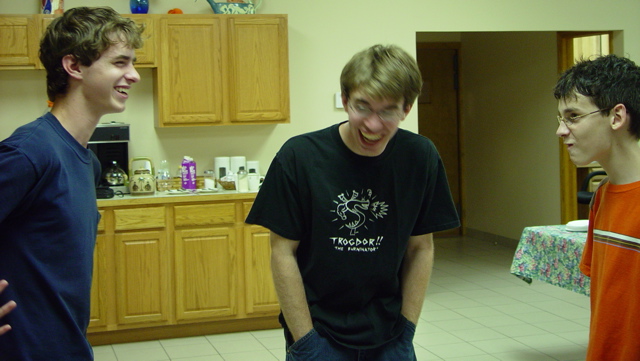
 Right before the Super Bowl, my son and I were discussing the “Truth versus Pietism” material I’ve been blogging about. He began sharing some interesting insights on sacred places. So I’d proudly like to introduce as my first guest blogger, my son, Timothy Krell:
Right before the Super Bowl, my son and I were discussing the “Truth versus Pietism” material I’ve been blogging about. He began sharing some interesting insights on sacred places. So I’d proudly like to introduce as my first guest blogger, my son, Timothy Krell:
A few days before Super Bowl Sunday, the idea of people watching the game in their churches was brought to my attention. I don’t know about you, but when I hear about people getting together in their local church to watch a football game, I cringe. But, instead of simply brushing over that feeling and moving on, I’d like to exercise the unique human ability of thinking about thinking and examine that thought. Where does this cringing come from?
Let’s assume that the game watching is not replacing any normal church service. Still there is the cringing. Our community has a room where we come together each Sunday for our Sunday service, cleverly termed the “Meeting Room.” I recently suggested that we watch the game on the TV there, but I did not feel the same cringing. Is this being a little hypocritical? I don’t think so. Allow me to explain.
In our meeting room, not only do we have our Sunday service there every week, but we have also watched movies ranging from The Passion of the Christ to Spider-Man, played games from musical chairs to Pictionary, and listened to music from worship to classical. The Meeting Room is simply another room that we happen to have our services in. It elicits no “spiritual” feelings from me like one would expect a temple or sacred sanctuary to. This is not to say, however, that the room is secular or that all our rooms are secular. Rather, they are all sacred. It is the life that I live together with my Brothers and Sisters every day that makes it so.
The reason, then, that I don’t have this mindset with a church is that it is designed to separate the secular and the sacred. Think about it. A church is built as a place for people to come once a week to worship God and hear the Gospel, away from their busy lives out in world and apart from their home and career. I realize that for some congregations there is need for more space than one member’s living room can offer, but it seems the problem is that the building is not part of the people’s daily lives. It is a reserved and sacred place, and hence comes the separation of the experience they know Monday through Saturday and the experience they know on Sunday. Even though it is not intended to be, the church building itself becomes a Pietistic symbol of the separation of secular and sacred.
I believe that it is much more beneficial to the congregation when the place where they come to worship on Sundays is not reserved for that alone, but also used for group activities, common meals, times of meditation, etc.. It is best when the church is a place where one can hear laughter, worship, weeping, praise, silence, and teaching throughout his daily life. This way we can symbolize to ourselves and to our children that every part of our lives together is sacred.